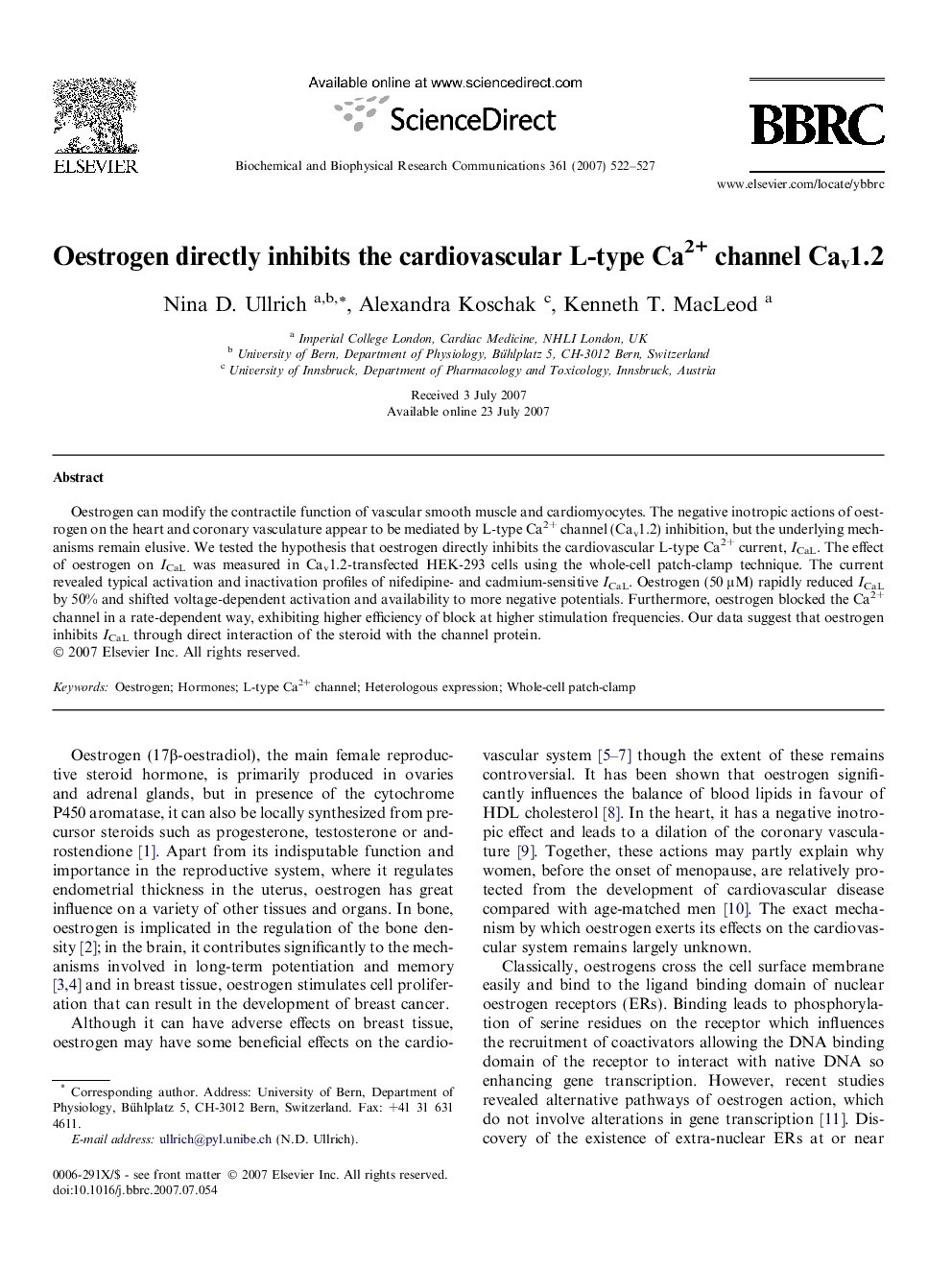| Article ID | Journal | Published Year | Pages | File Type |
|---|---|---|---|---|
| 10767097 | Biochemical and Biophysical Research Communications | 2007 | 6 Pages |
Abstract
Oestrogen can modify the contractile function of vascular smooth muscle and cardiomyocytes. The negative inotropic actions of oestrogen on the heart and coronary vasculature appear to be mediated by L-type Ca2+ channel (Cav1.2) inhibition, but the underlying mechanisms remain elusive. We tested the hypothesis that oestrogen directly inhibits the cardiovascular L-type Ca2+ current, ICaL. The effect of oestrogen on ICaL was measured in Cav1.2-transfected HEK-293 cells using the whole-cell patch-clamp technique. The current revealed typical activation and inactivation profiles of nifedipine- and cadmium-sensitive ICaL. Oestrogen (50 μM) rapidly reduced ICaL by 50% and shifted voltage-dependent activation and availability to more negative potentials. Furthermore, oestrogen blocked the Ca2+ channel in a rate-dependent way, exhibiting higher efficiency of block at higher stimulation frequencies. Our data suggest that oestrogen inhibits ICaL through direct interaction of the steroid with the channel protein.
Related Topics
Life Sciences
Biochemistry, Genetics and Molecular Biology
Biochemistry
Authors
Nina D. Ullrich, Alexandra Koschak, Kenneth T. MacLeod,
